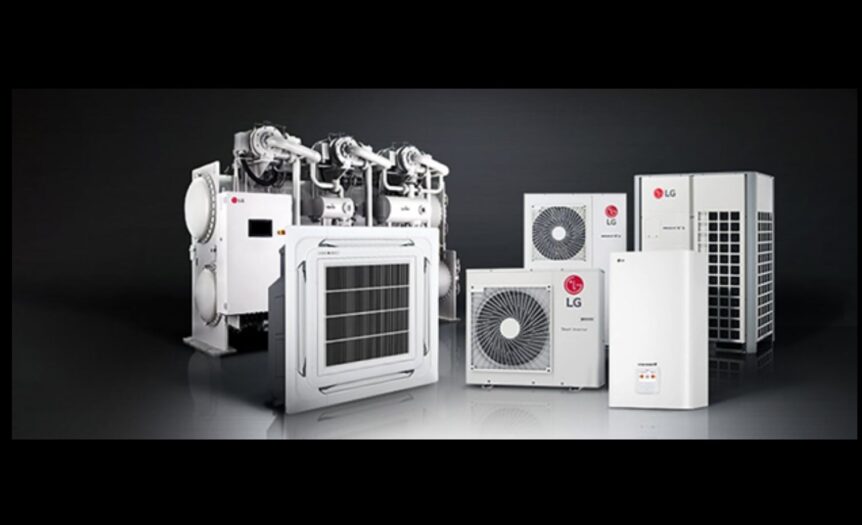When it comes to selecting the right HVAC system for your home or commercial space, maximizing both comfort and space efficiency is key. Among the various options available, wall-mounted and floor-mounted HVAC systems offer unique benefits tailored to different needs. Both systems provide effective heating, cooling, and air circulation, but understanding how they compare in terms of performance, installation, and space utilization can help you make the best choice for your environment.
Wall-Mounted HVAC Systems: A Space-Saving Solution
Wall-mounted HVAC units are a popular choice for those looking to save floor space while maintaining efficient climate control. These systems are typically installed high on the wall, often in a corner of the room, which makes them ideal for small or congested spaces. Wall-mounted air conditioners, including split systems, are designed to provide both heating and cooling, making them versatile for year-round use.
One of the main advantages of a wall-mounted HVAC system is its ability to blend seamlessly into the room’s design. These units are less obtrusive than traditional floor-standing models, making them particularly well-suited for spaces where floor space is at a premium. For example, in apartments or offices where layout flexibility is essential, wall-mounted units allow for more freedom in arranging furniture without sacrificing comfort.
Additionally, wall-mounted HVAC systems are often equipped with advanced features like Wi-Fi connectivity, enabling users to control the temperature from their smartphones. This can be particularly beneficial in both residential and commercial settings where convenience and efficiency are priorities. With the rise of smart home technology, wall-mounted units that support voice control through Amazon Alexa™ or Google Assistant™ further enhance ease of use.
While the installation process for wall-mounted systems may involve some upfront costs, the efficiency of these units can lead to lower energy consumption and reduced operating costs over time. Mini split systems, which are commonly wall-mounted, are known for their excellent energy efficiency, as they don’t require ductwork, reducing heat loss and increasing overall performance.

The absence of ducts also means they are an excellent choice for homes or buildings with limited space for large HVAC ducts.
Floor-Mounted HVAC Systems: Reliable Performance with Flexibility
On the other hand, floor-mounted HVAC units provide robust performance and are a great option for spaces where wall-mounted systems may not be feasible or desirable. Floor units typically sit at ground level, offering powerful airflow that efficiently circulates air throughout a room. They are often used in larger spaces, such as open-plan offices or commercial buildings, where effective air distribution is essential.
Floor-mounted systems are available in both traditional and split designs. In commercial settings, floor-mounted air conditioners are commonly found as part of a VRF (Variable Refrigerant Flow) system. These systems offer a higher level of customization in temperature control, as multiple units can be linked together and controlled independently. This is ideal for buildings with diverse heating and cooling needs across different rooms or zones.
Another advantage of floor-mounted units is their ability to be installed in areas where wall-mounted units may not be practical. In spaces with high ceilings, for example, a floor unit can provide better heat distribution by positioning the system at a more accessible level. Additionally, floor-mounted units are often favored in settings that require more direct air conditioning, such as in commercial kitchens or warehouses, where air needs to be circulated more effectively.
Floor-mounted HVAC systems are also favored in larger, more open spaces where the power of the unit’s air distribution is needed to maintain a comfortable environment. Because these units are closer to the ground, they can be particularly effective at cooling down lower areas of a room or space. In environments where floor space is not a constraint, floor-mounted units provide solid, long-term performance without requiring complex installation.
Comparing Performance and Efficiency
When evaluating the performance and energy efficiency of wall-mounted versus floor-mounted systems, it’s important to consider the size and layout of the space, as well as the specific cooling and heating needs. Wall-mounted units tend to be more energy-efficient in smaller spaces, where targeted cooling and heating are sufficient. The ductless design of mini split systems, often wall-mounted, reduces the need for complex ductwork, resulting in less energy loss and better overall performance.
On the other hand, floor-mounted units can be more effective in larger or open-plan spaces where a greater volume of air needs to be moved. VRF systems, which often feature floor-mounted units, provide highly customizable solutions, making them an excellent choice for commercial properties with varying heating and cooling demands. These systems allow users to adjust temperatures in different zones, improving comfort and efficiency.

The choice between wall-mounted and floor-mounted HVAC systems also depends on the long-term goals for energy savings. Both systems can be energy-efficient, but mini splits (wall-mounted) are often preferred for residential environments due to their lower energy consumption and ability to be controlled via smart technology. For commercial applications, floor-mounted VRF systems may be a better option due to their capacity to handle large areas and varying climate conditions within the same building.
Space Considerations and Installation
One of the most significant differences between wall-mounted and floor-mounted HVAC systems is the amount of space they occupy. Wall-mounted systems are ideal for smaller homes or offices, as they do not take up valuable floor space and can be installed in locations that are less intrusive. These units are typically quieter and less noticeable, providing efficient climate control without interrupting the room’s aesthetic.
Floor-mounted units, however, are generally more noticeable and require more floor space for installation. They may be better suited for larger homes or commercial environments, where space is less of a concern, and the performance needs outweigh the preference for space-saving. The installation process for floor-mounted units can also be more involved, particularly in larger commercial settings where ductwork or a VRF system might be required.
Choosing the Right HVAC System
Ultimately, the decision between wall-mounted and floor-mounted HVAC systems comes down to a balance of space, comfort, and efficiency. For residential settings where space-saving and energy efficiency are top priorities, wall-mounted units, such as mini splits, are often the best choice. They offer the flexibility to heat and cool rooms while maintaining an unobtrusive profile.
For commercial spaces or larger homes where effective air distribution and versatility are key, floor-mounted HVAC systems can deliver the required performance. Their ability to provide consistent, reliable cooling and heating in expansive areas makes them a great solution for diverse climates and large buildings.
Whether you opt for a wall-mounted or floor-mounted HVAC system, ensuring that the unit meets your space’s specific needs will result in optimal comfort and energy savings for years to come.








